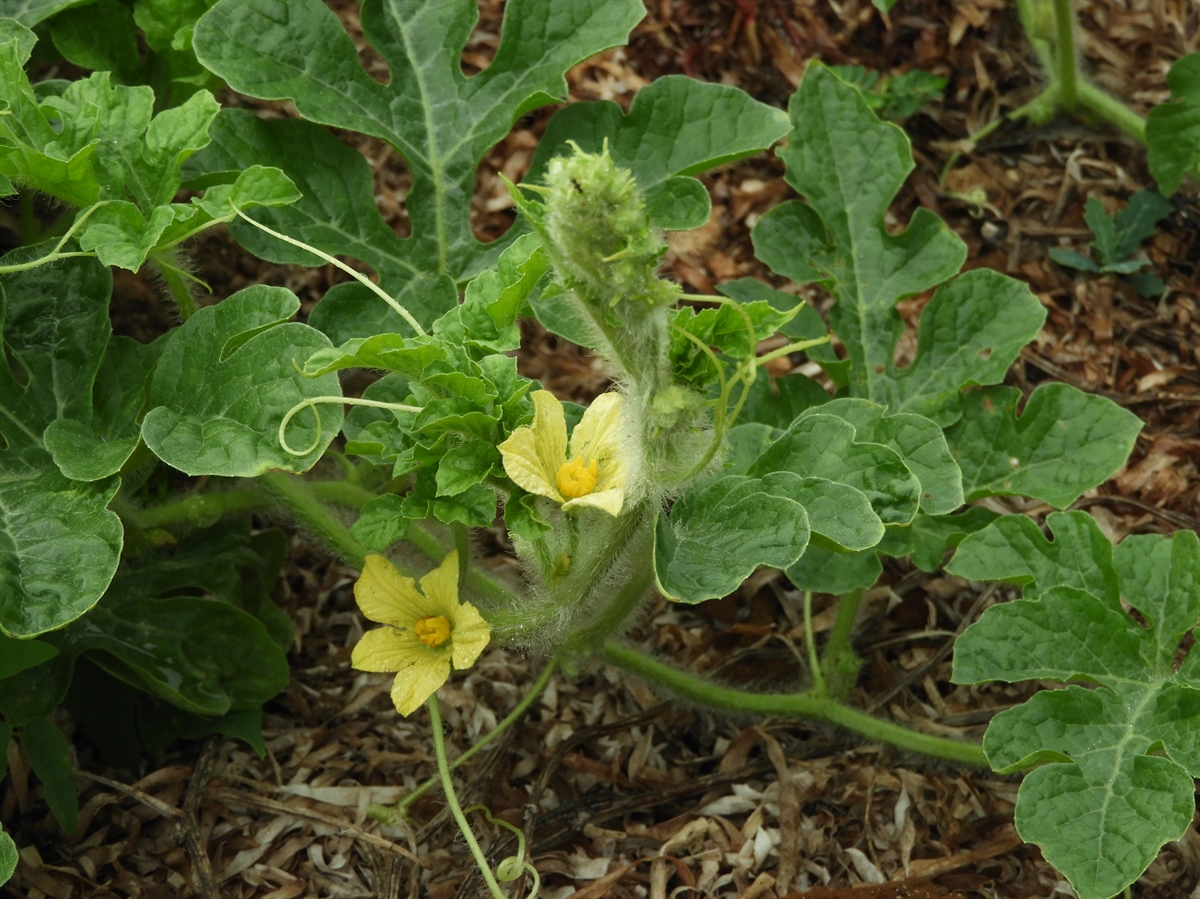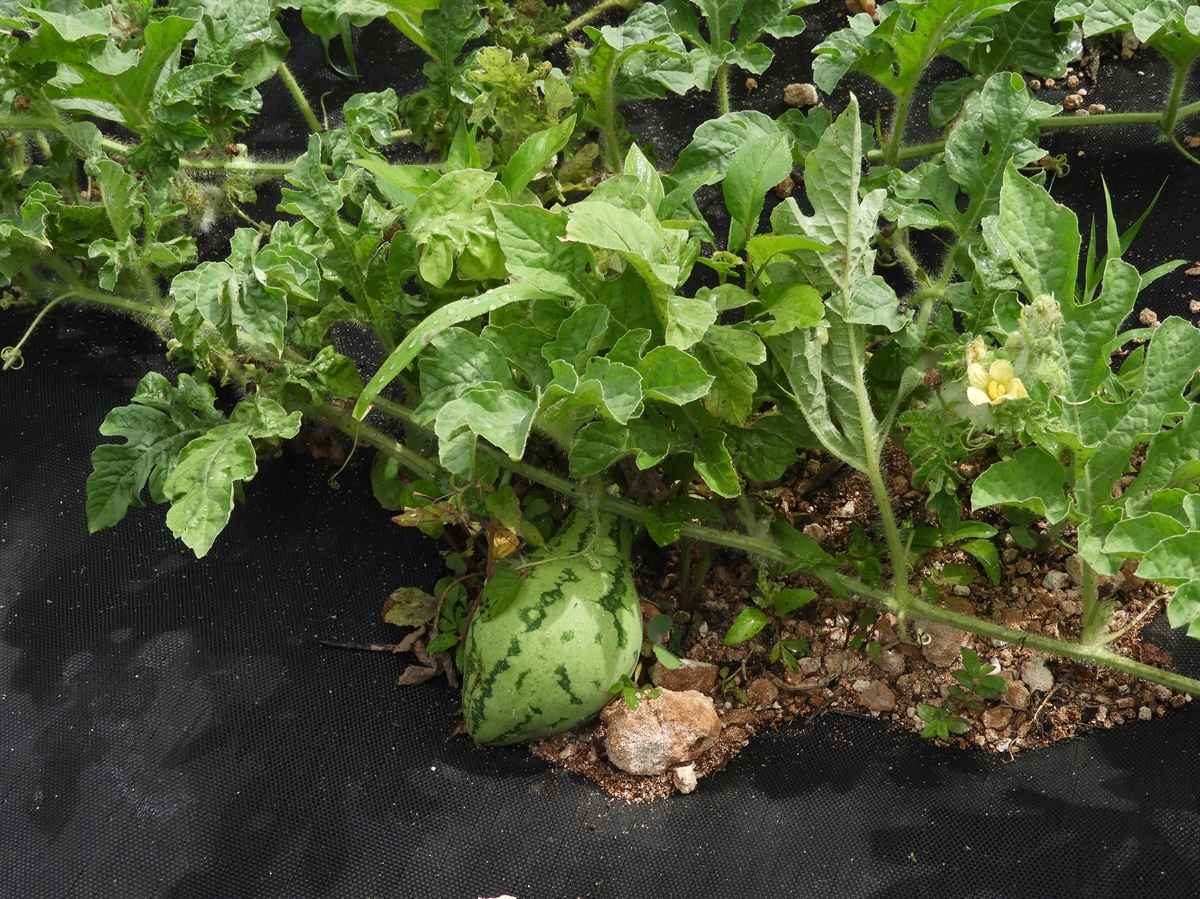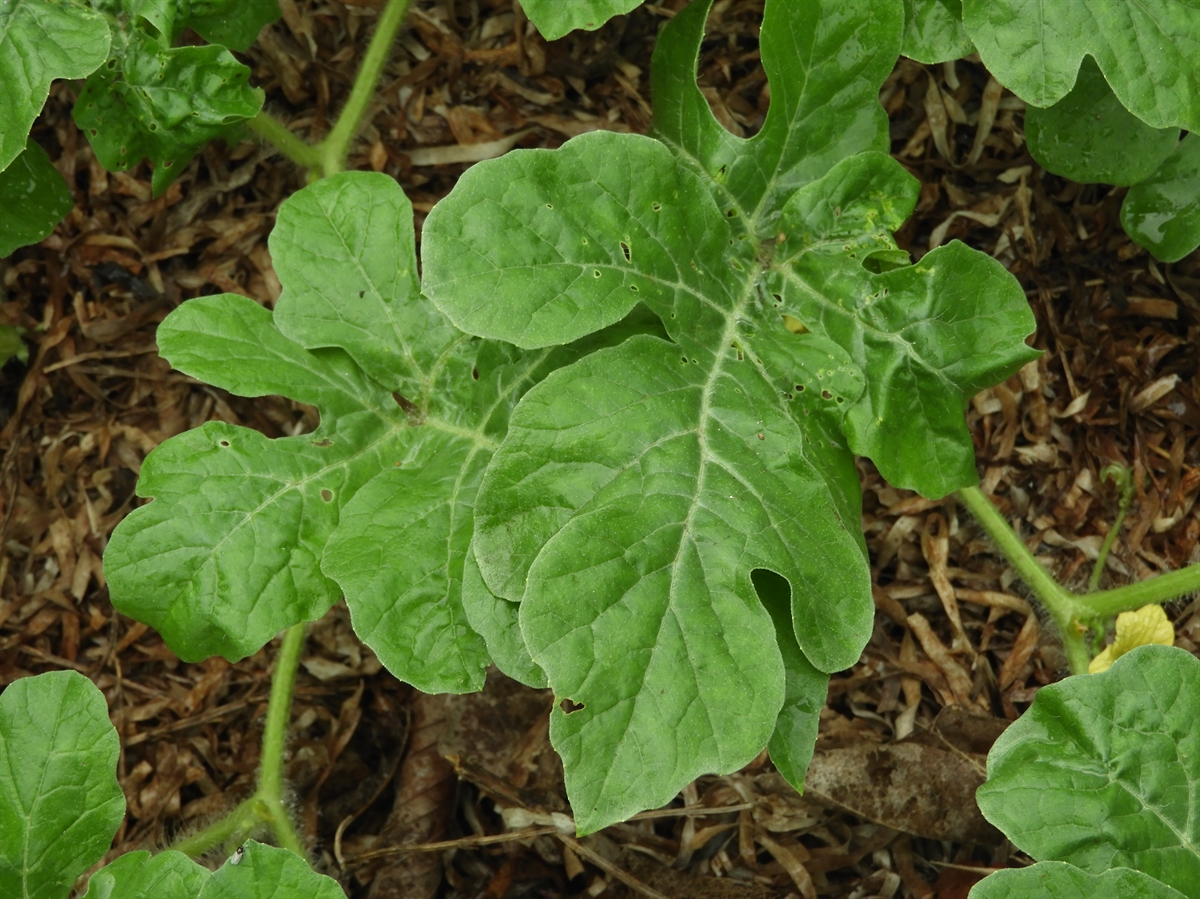Habit: Citrullus lanatus grows as an annual vine up climbing along the ground. Stems early pubescent. The leaves are arranged alternately, ovate to oblong to 25 cm in length, with deep lobes each with its own lobes. The leaf base is cordate and the leaf margin is partially dentate. There are forked tendrils in leaf axils.
Citrullus lanatus is monoecious. The incomplete, imperfect, actinomorphic, flowers are solitary in leaf axils. The calyx has 5 fused green sepals. The corolla has 5, fused at the base, yellow petals. In staminate flowers there are 3 stamens and no carpel. In carpellate flowers there are two staminodes, no stamens, and an inferior ovary with a single locule and many seeds. The fruit is an oblong green berry often with stripes at maturity with many seeds, to 50 cm in length and 20 cm wide.
Habitat: Citrullus lanatus grows in Human Altered environments (yards, farms).
Distribution: Citrullus lanatus is NOT native to the Lucayan Archipelago but is grown on many islands. It is native to north eastern Africa but is grown globally.
Medicinal/Cultural/Economic usage: Citrullus lanatus is used medicinally in the Lucayan Archipelago to treat urinary issues and dermatological problems.
Citrullus lanatus is grown for its sweet and tasty fruits.


